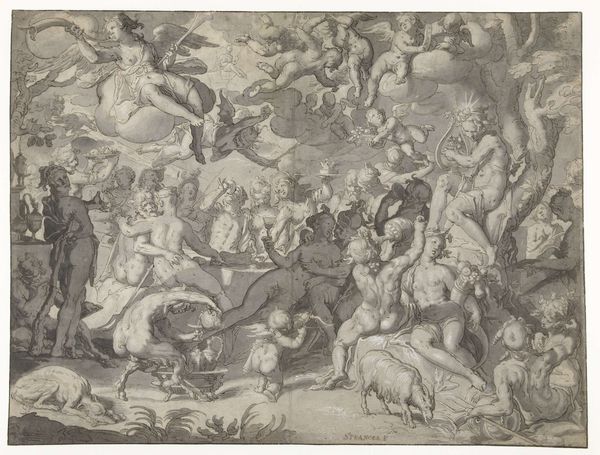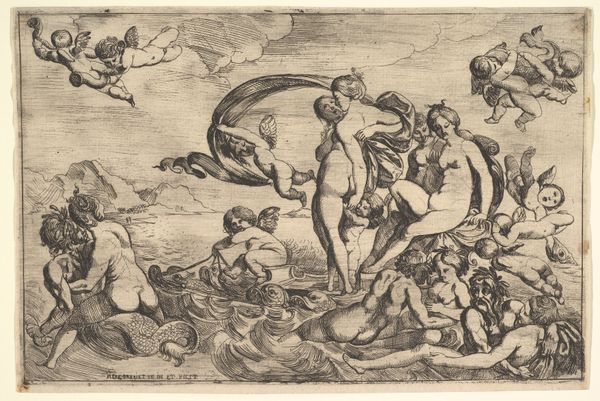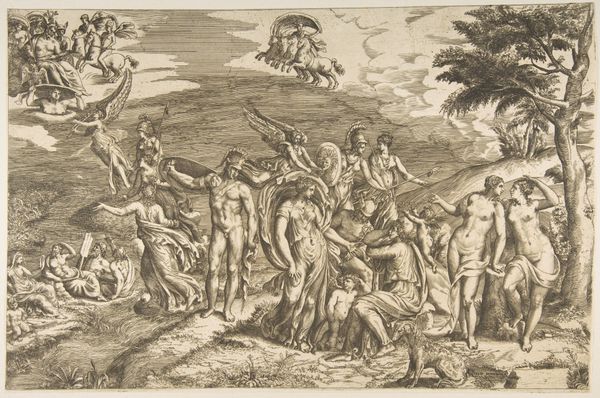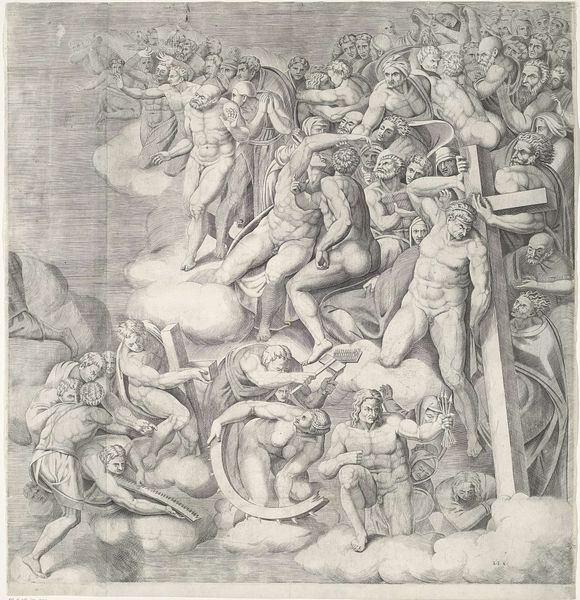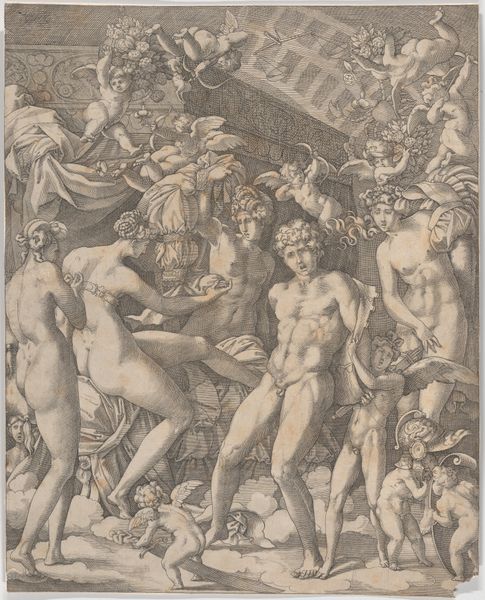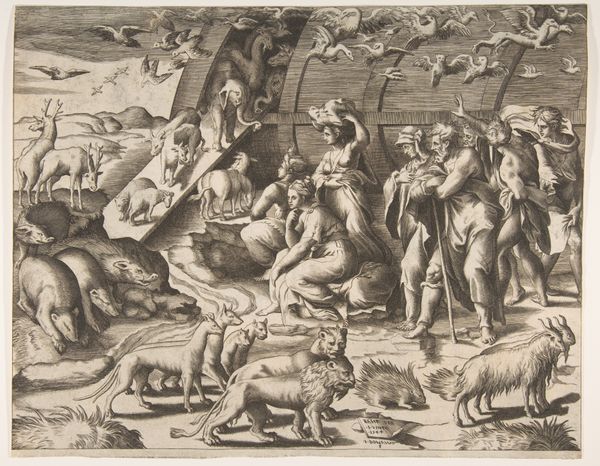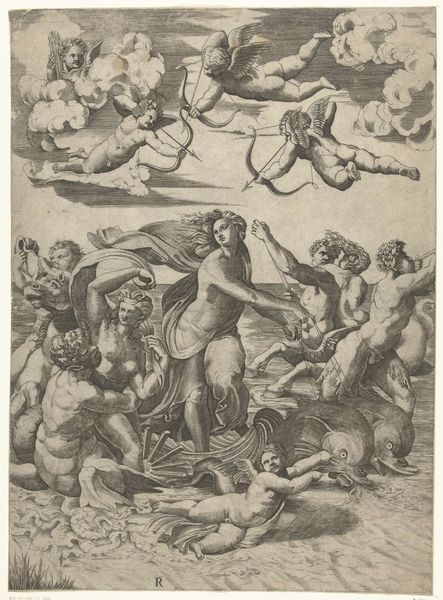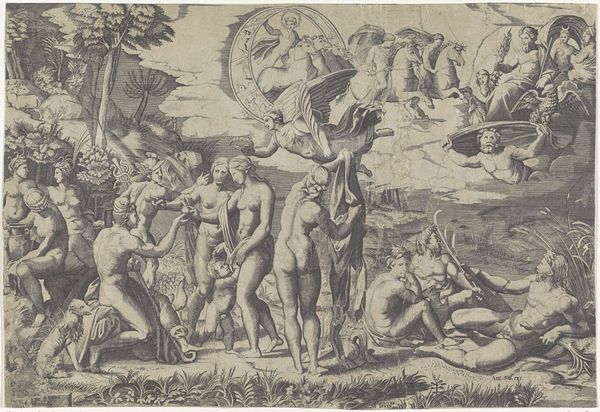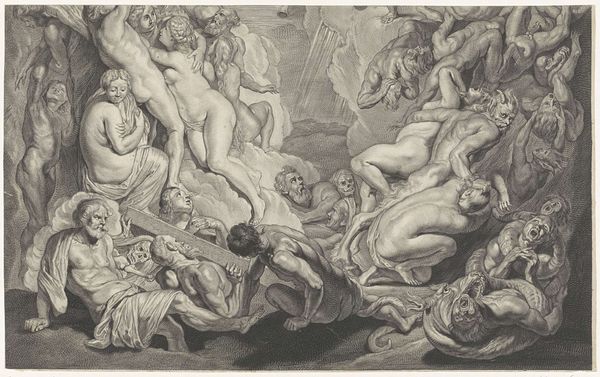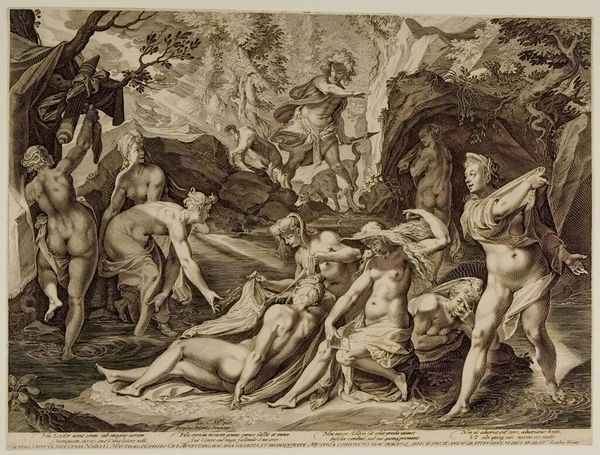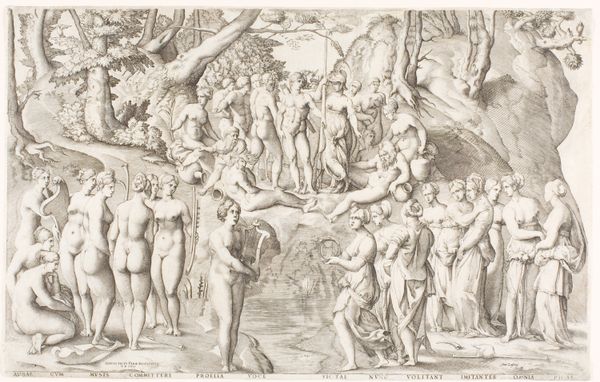
painting, oil-paint, canvas
#
allegory
#
baroque
#
painting
#
oil-paint
#
figuration
#
oil painting
#
canvas
#
genre-painting
#
history-painting
#
nude
Dimensions: 36.5 cm (height) x 53 cm (width) (Netto)
Editor: This is Jan van Haensbergen’s "Paris Giving Venus the Apple," painted between 1657 and 1705, using oil on canvas. The scene is teeming with figures, and the palette is quite vibrant. I'm immediately curious about the process of its creation. What aspects of this piece stand out to you? Curator: Well, immediately I’m drawn to the materiality of it. Consider the canvas itself, how it was prepared, the source of the pigments for the oils, the social context of accessing those materials in the 17th century. It reflects not just artistic skill, but also economic realities and access. How do you think the very process of procuring and combining these materials influenced the final artwork, especially compared to, say, fresco? Editor: That's fascinating. I hadn't considered the canvas preparation and pigment sourcing so directly. Would that potentially restrict artistic expression, based on availability? Curator: Absolutely. Furthermore, baroque art was, in part, about spectacle. Think about the patronage system – who commissioned this, and what message were they trying to convey through the display of such luxurious materials and labor-intensive painting techniques? Was it a comment about power, taste, even access? What might we say of how this access to materials defines art of this period compared to folk art forms which repurposed materials in daily life? Editor: I see what you mean! The contrast between accessible and exclusive creation shines a light on societal structures. Looking closely, I'm struck by the layering of paint. Curator: Indeed. Recognizing and discussing this makes a deep understanding about art practices! Thank you! Editor: Thank you, I see this piece, and artistic creation, in a new light!
Comments
No comments
Be the first to comment and join the conversation on the ultimate creative platform.
